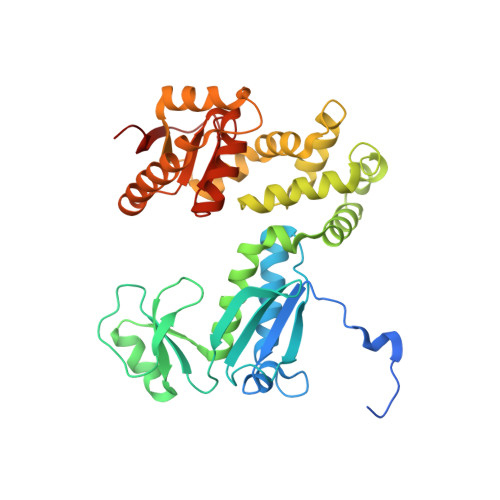Structural Insights into the Substrate Specificity Switch Mechanism of the Type III Protein Export Apparatus.
Inoue, Y., Ogawa, Y., Kinoshita, M., Terahara, N., Shimada, M., Kodera, N., Ando, T., Namba, K., Kitao, A., Imada, K., Minamino, T.(2019) Structure 27: 965
- PubMed: 31031200
- DOI: https://doi.org/10.1016/j.str.2019.03.017
- Primary Citation of Related Structures:
6AI0, 6AI1, 6AI2, 6AI3 - PubMed Abstract:
Bacteria use a type III protein export apparatus for construction of the flagellum, which consists of the basal body, the hook, and the filament. FlhA forms a homo-nonamer through its C-terminal cytoplasmic domains (FlhA C ) and ensures the strict order of flagellar assembly. FlhA C goes through dynamic domain motions during protein export, but it remains unknown how it occurs. Here, we report that the FlhA(G368C) mutation biases FlhA C toward a closed form, thereby reducing the binding affinity of FlhA C for flagellar export chaperones in complex with their cognate filament-type substrates. The G368C mutations also restrict the conformational flexibility of a linker region of FlhA (FlhA L ), suppressing FlhA C ring formation. We propose that interactions of FlhA L with its neighboring subunit converts FlhA C in the ring from a closed conformation to an open one, allowing the chaperon/substrate complexes to bind to the FlhA C ring to form the filament at the hook tip.
Organizational Affiliation:
Graduate School of Frontier Biosciences, Osaka University, 1-3 Yamadaoka, Suita, Osaka 565-0871, Japan.














